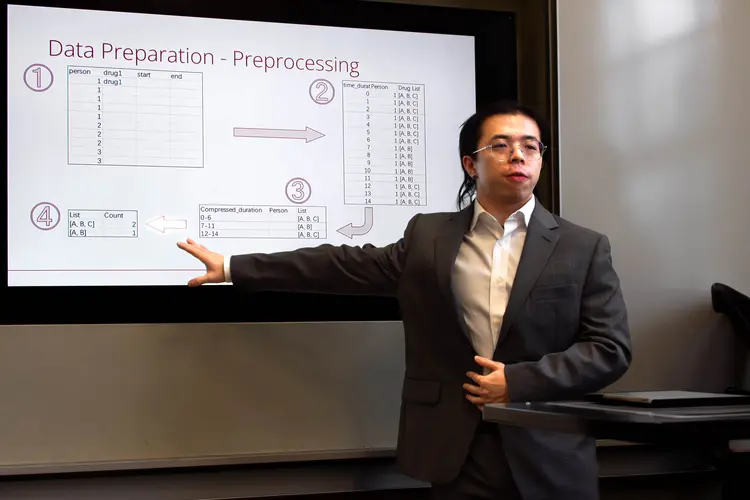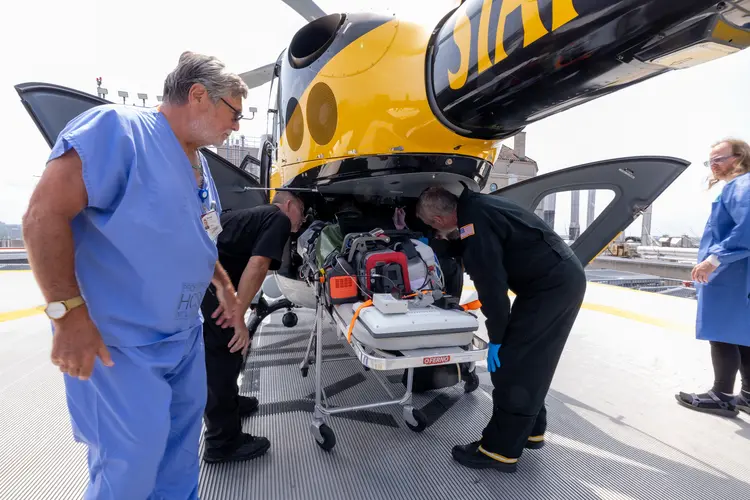Pediatric Subspecialty Outreach Initiatives Reduced Driving Time to Doctors
Presence of clinics had the greatest effect on rural children
Media Inquiries
The United States has a shortage of pediatric subspecialists (doctors who treat children with complex medical conditions), and the availability and distribution of these medical professionals may be inadequate to meet the health needs of children. In a new study, researchers examined children’s health care in Maine to determine the impact of pediatric subspeciality outreach clinics on access to the nearest pediatric subspecialists. The study found that the presence of these clinics substantially reduced driving time to subspecialists, especially for children living in rural areas of the state.
The study, by researchers at Carnegie Mellon University, Tufts University, MaineHealth, and Northern Light Health, is published in BMC Pediatrics(opens in new window).
"Nearly a quarter of U.S. families who need pediatric subspecialty care say they have difficulty accessing this care," explained Kristen Kurland(opens in new window), professor of architecture, information systems and public policy at Carnegie Mellon University’s Heinz College of Information Systems and Public Policy(opens in new window), who coauthored the study. "Children referred to pediatric subspecialists may wait months or travel hundreds of miles before receiving care, and the problems are exacerbated in rural areas."
Recent research highlighting the shortage of pediatric subspecialists has identified wide variations in the distance from children to the nearest subspecialists but has not accounted for subspecialty outreach clinics, which are staffed periodically by specialists. Pediatric subspecialties include pediatric cardiology, gastroenterology, endocrinology, neurology, genetics, pulmonology and nephrology.
In this study, researchers used 2022 administrative data (including the schedule and location of pediatric subspecialty clinics) from two health systems in Maine, the second-most rural state in the country, to estimate the driving time from each ZIP code tabulation area to the nearest subspecialist, with and without including outreach clinics. Using 2020 census data, they calculated driving times for the state’s overall population of children, as well as for children living in urban and rural areas.
Of more than 207,000 individuals under 20 years old in the state, the study found that 68% lived closer to an outreach location than to a clinical hub. The impact of outreach clinics varied by specialty and was concentrated among children in rural areas, who were located farthest from clinical hubs. Across the seven subspecialties offering outreach clinics, the clinics reduced median driving times to the nearest pediatric subspecialist by five to 26 minutes among all children and by 16 to 46 minutes among rural children.
Based on their findings, the authors concluded that pediatric subspecialty outreach clinics can substantially reduce driving time to the nearest pediatric subspecialist, especially for children living in rural areas. Assessments of access and barriers to pediatric specialty care that do not include outreach clinics may underestimate access, they noted. They also suggested that policymakers consider expanding the number of outreach clinics to boost access.
However, the impact of outreach clinics on improving access may be mitigated by the relative infrequency at which they are scheduled. Of the 25 subspecialty-location combinations, 16 clinics were held 12 or fewer times in 2022, and 10 were held six or fewer times.
Among the study’s limitations, the authors note that because their data are based on just one state, findings for other locations may differ based on how clinical hubs and outreach clinics are distributed. Also, the study did not consider travel across state lines, use of public transportation, car ownership or innovations such as telemedicine. Nor did it measure patients’ or families’ perceptions of the need for care, desire to seek care, ability to pay for care, or other aspects of access.
"Children in rural Maine face significant disparities in geographic access to care, particularly for specialties offered at only one clinic hub or for specialties offered at relatively few outreach sites," noted James C. Bonhoff, professor of pediatrics at Tufts and a pediatrician at MaineHealth, who led the study. "Having more information about the current availability — and ideally, use — of outreach clinics will facilitate more accurate assessments of the true state of geographic access to pediatric subspecialty care, and may also support decisions by health systems and states around supporting these initiatives."
The study was funded by the National Center for Advancing Translational Sciences of the National Institutes of Health.
Kristen Kurland



